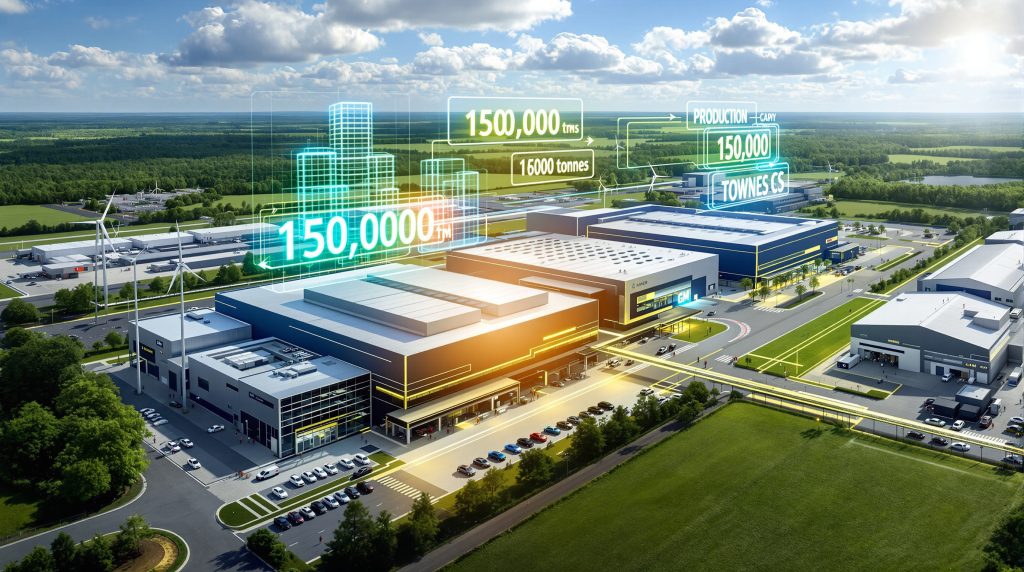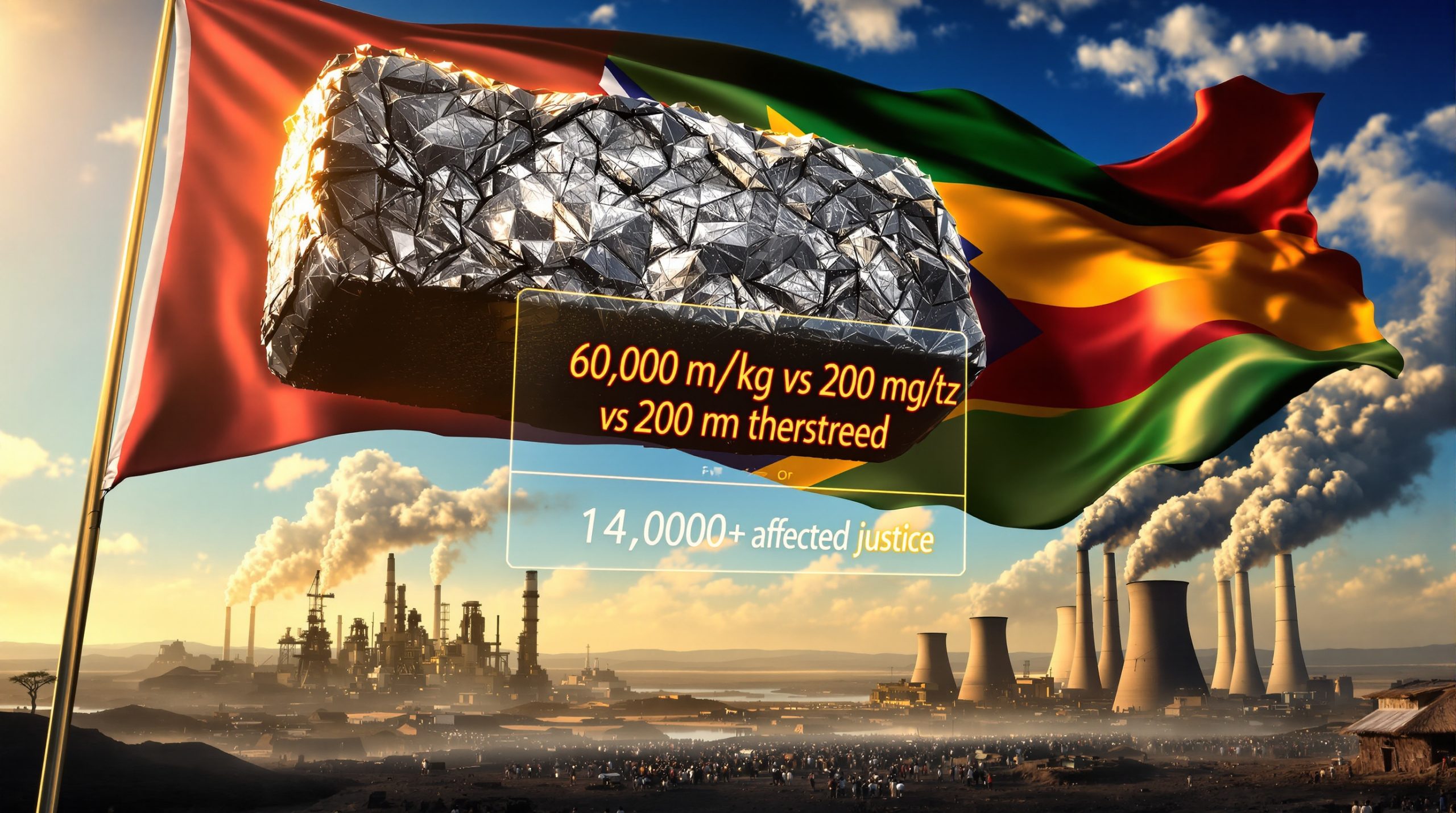Understanding Vianode's Strategic North American Expansion
Vianode, a Norwegian-based producer known for its advanced synthetic graphite technology, is making a pivotal move to expand its presence in North America. The decision by Vianode to build graphite factory in Ontario represents a strategic response to growing demand for battery-grade materials and the urgent need among G7 nations to strengthen critical mineral supply chains. Vianode's production journey began with a pilot facility in Kristiansand, Norway, in 2021, quickly progressing to the commercial-scale Via ONE factory in Herøya in 2024.
These milestones not only established Vianode's credentials but also provided vital operational know-how for global scale-up. Furthermore, this expansion aligns with broader battery metals investment trends across North America.
The Norwegian Company's Journey from Pilot to Global Scale
Since 2021, Vianode has systematically built its graphite production expertise. With Via ONE operational in Norway, described as the world's most sustainable synthetic graphite plant, Vianode brings tested technology, strong supply chain relationships, and established environmental leadership to its new Canadian venture.
Critical Mineral Supply Chain Dependencies Driving Investment
A key motivator behind this North American expansion is the region's substantial dependency on Chinese graphite imports. Graphite is critical not only for lithium-ion batteries but also for semiconductors, nuclear applications, national defence, and steel production.
By establishing a large-scale, domestic synthetic graphite facility, Vianode aims to mitigate regional supply chain vulnerabilities. Additionally, this move addresses global trade tensions whilst complying with evolving trade policies and solidifying a position as a preferred supplier within G7 economies.
How Will the Ontario Facility Transform North American Battery Material Supply?
The announcement that Vianode to build graphite factory in Ontario marks a significant boost for the North American battery materials sector. The "Via TWO" project is structured as a scalable, multi-phase investment designed to deliver both immediate and long-term supply capacity.
Via TWO Project Specifications and Production Timeline
Via TWO will initially involve over CAD $2 billion in investment, with plans for several billion Canadian dollars more as capacity ramps up. The project is set to start commercial production by 2028, supporting both regional demand and national goals for critical mineral independence.
Table: Via TWO Investment Phases
| Phase | Investment (CAD) | Capacity (tonnes/year) | Jobs Created | Timeline |
|---|---|---|---|---|
| Initial | $2+ billion | 50,000 | 300 | 2028 start |
| Full Scale | Several billion | 150,000 | 1,000+ | 2030+ |
Multi-Billion Dollar Investment Breakdown
The phased approach allows capital risk to be managed while scaling up as market conditions warrant. By 2030 or beyond, the plant aims to reach a full annual capacity of 150,000 tonnes, supporting over 1,000 high-quality jobs.
Production Capacity and Market Impact Projections
With an initial 50,000 tonnes of capacity, Vianode's Ontario plant could supply a substantial share of North American battery and industrial graphite requirements. Consequently, as it increases production, the facility is positioned to disrupt the regional market, drive down costs, and enhance the reliability of domestic supply for pivotal sectors.
What Makes St. Thomas the Ideal Location for Battery Material Manufacturing?
Geographic and Infrastructure Advantages
St. Thomas, Ontario, stands out for its robust industrial infrastructure, skilled workforce, and strategic proximity to major manufacturing hubs. The site at Yarmouth Yards offers direct access to transportation networks and utilities optimised for heavy industry operations.
Proximity to PowerCo and Automotive Manufacturing Clusters
Located near the new PowerCo battery plant, Via TWO benefits from regional synergies, logistical advantages, and a ready-built battery manufacturing ecosystem. This proximity bolsters supply chain integration and could facilitate innovative R&D collaborations.
Ontario's Low-Carbon Electricity Grid Benefits
Ontario's grid, prominently featuring hydropower and renewables, delivers a distinctive emissions advantage for industrial projects. For synthetic graphite manufacturing—which is energy-intensive—access to low-carbon electricity is essential. This infrastructure supports renewable energy solutions throughout the manufacturing process.
Ontario's manufacturing ecosystem provides world-class infrastructure access, skilled workforce availability, and clean energy resources that align perfectly with sustainable battery material production requirements.
Who Are Vianode's Key Customers and Market Targets?
Vianode's customer base for Ontario's facility is both broad and strategically oriented. The company has secured a significant supply agreement with General Motors, positioning itself at the heart of North America's automotive electrification shift.
General Motors Partnership and Supply Agreement Details
A January 2025 supply agreement with GM establishes Vianode as a key partner in delivering high-performance synthetic graphite for the automaker's future EV and hybrid battery systems. The delay in commercial production from 2027 to 2028 aligns well with GM's evolving product timelines and continued focus on electrified powertrains.
Beyond Electric Vehicles: Diverse Application Markets
Synthetic graphite from Via TWO will serve far more than just the EV sector. Key Canadian and international industries stand to benefit, including:
- Semiconductor manufacturing
- Grid-scale energy storage systems
- Nuclear reactor components
- Defence technology applications
- Steel production processes
Featured Snippet Optimisation:
Synthetic graphite applications extend far beyond EV batteries, including semiconductor manufacturing, grid-scale energy storage, nuclear components, defence technology, and steel processes.
G7 Supply Chain Security Implications
A substantial aim for this project is to move the G7 bloc toward greater resilience in critical mineral supply chains. By supplying domestic and allied markets, Vianode helps Canada decrease dependency on external sources and enhances collective economic security through the critical minerals transition.
How Does Vianode's Production Process Achieve Sustainability Leadership?
Comparing Via ONE Norway Operations to Conventional Methods
The sustainability profile of Vianode's technology stands out in the global graphite sector. Its process innovations have slashed emissions compared to conventional synthetic graphite production.
Table: Sustainability Comparison
| Production Method | CO₂ Emissions (kg/kg graphite) | Reduction % |
|---|---|---|
| Conventional | 19+ kg CO₂e | Baseline |
| Via ONE Norway | 1.9 kg CO₂e | 90% lower |
| 2030 Target | 1.0 kg CO₂e | 95% lower |
Carbon Footprint Reduction Metrics
Via ONE's output is already produced at 90 per cent lower carbon emissions than industry baselines. The stated 2030 goal is to reach a groundbreaking 1 kg of CO₂ per kilogram of graphite—an achievement that can shape regulatory and customer expectations worldwide.
Clean Technology Integration and Process Innovation
Process innovation at Vianode encompasses everything from advanced kiln technologies to energy and material recovery systems. The company's site integration strategy prioritises both high throughput and minimal environmental impact, reinforcing Canada's ambition as a clean technology leader.
What Are the Economic and Strategic Benefits for Canada?
Federal and Provincial Government Support Framework
Federal and Ontario government support has played a decisive role, with Vianode's project details aligning with the new Critical Minerals Production Alliance. The combined deployment of financial incentives, regulatory streamlining, and offtake support ensures Canada advances its objectives in energy transition and allied supply chain security.
Critical Minerals Production Alliance Alignment
Integrating Vianode into Canada's critical minerals development framework boosts the national agenda. This supports advancements in clean energy, defence, and advanced manufacturing capabilities whilst contributing to the Canada energy transition.
Job Creation and Economic Development Impact
The Via TWO facility is set to revitalise the St. Thomas region, creating approximately 300 jobs at launch and over 1,000 at full scale. The anticipated economic ripple includes upskilling initiatives, youth employment growth, and stimulation of local supply chains.
Canada's Minister of Energy and Natural Resources emphasises that this investment strengthens the nation's position as a trusted supplier to allied countries while supporting clean energy transition goals.
How Will This Impact Global Graphite Market Dynamics?
Reducing Chinese Import Dependencies
Currently, North America relies heavily on China for graphite—especially synthetic grades required for lithium-ion batteries and defence-critical sectors. However, when Vianode to build graphite factory in Ontario becomes operational, it will provide a regional alternative, insulating domestic supply chains from potential trade disruptions or geopolitical tensions.
North American Supply Chain Resilience Building
Localising production not only stabilises pricing but also bolsters just-in-time manufacturing models across multiple industries. The plant's output is expected to target both established automakers and a range of advanced sectors, enhancing flexibility and reducing risk.
Competitive Positioning Against Asian Producers
While Asian—most notably Chinese—producers currently dominate the global graphite market, Vianode's sustainability achievements and North American location provide a compelling unique selling proposition. Consequently, this positioning could command a premium in certain market segments.
What Does This Mean for Future Battery Material Investments?
Investment Trends in Critical Mineral Processing
The scale and ambition of Vianode's Ontario project signals a wider trend of strategic investments in critical minerals processing within North America. These moves anticipate rising security, sustainability, and regulatory demands—including local content and emission reduction requirements.
Canada's Growing Role in Global Battery Supply Chains
As domestic and allied nations prioritise critical mineral sovereignty, Canada's manufacturing, R&D, and policy ecosystems make it a strategically vital node in the global battery supply chain. Furthermore, this attracts further international investment and technology transfers.
Implications for Electric Vehicle Cost Structure
Ensuring ready availability of high-quality graphite anode material allows automakers to plan long-term production and innovation cycles with confidence. When Vianode to build graphite factory in Ontario reaches full capacity, manufacturers will benefit from:
- Reduced supply chain risk exposure
- Improved cost predictability
- Enhanced sustainability reporting capabilities
- Strengthened trade policy compliance
Frequently Asked Questions
When will Vianode's Ontario facility begin production?
Commercial production is scheduled to commence in 2028, with the initial phase targeting 50,000 tonnes annual capacity.
How does synthetic graphite differ from natural graphite?
Synthetic graphite offers superior performance characteristics, consistent quality, and can be produced with significantly lower environmental impact using clean energy sources.
What industries will benefit from domestic graphite production?
Key beneficiaries include electric vehicle manufacturing, renewable energy storage, semiconductor production, defence applications, and steel manufacturing.
Conclusion: Positioning Canada as a Battery Materials Leader
Long-term Strategic Implications
The establishment of Vianode's graphite factory in Ontario places Canada at the forefront of the battery materials economy. This initiative combines sustainable processing, high-impact job creation, and resilience in the critical minerals sector.
Supporting North American Energy Transition Goals
By fostering investment like Vianode's, Canada deepens its commitment to a low-carbon, technologically advanced future. In addition, the project stands as a cornerstone for both the North American and global energy transition, ensuring secure, clean, and competitive battery material supply chains.
Disclaimer:
All projections, timelines, and market impact analyses are subject to risks from commodity price fluctuations, regulatory changes, and unforeseen production delays. This article uses the most up-to-date industry and company data as of November 2025, but future developments may arise that alter specific financial, regulatory, or technological assumptions.
Ready to Capitalise on the Next Critical Minerals Discovery?
Discovery Alert instantly identifies significant ASX mineral discoveries using its proprietary Discovery IQ model, transforming complex mineral data into actionable investment insights for both battery metals and traditional commodities. Explore our discoveries page to see how historic mineral discoveries have generated substantial returns, then begin your 30-day free trial today to position yourself ahead of the market.




